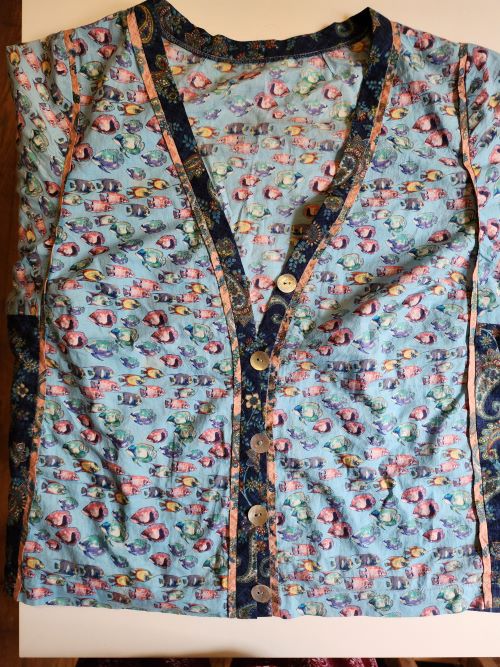
Here’s a mystery story about buttons that can burn. Two years ago, Rae made a series of lawn Tabula Rasa Jackets, to introduce summer TRJ design options to the readers of Classic Sewing Magazine. Lovely lawn was ordered from Farmhouse Fabrics for the tops. She was especially fond of a piece covered in tropical fish and a coordinating paisley from Tory Richards.
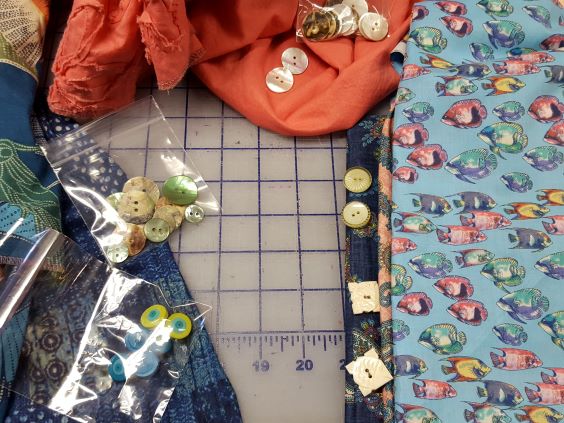
The resulting Tabula Rasa Jacket is very simple with an opened up neckline, narrow band and button and loop closures. As is my habit, I searched my button boxes and found some vintage plastic buttons that worked great with the two fabrics. This top became a real go to piece during the summer, coordinating with most of my Eureka! light summer pants and tank tops.
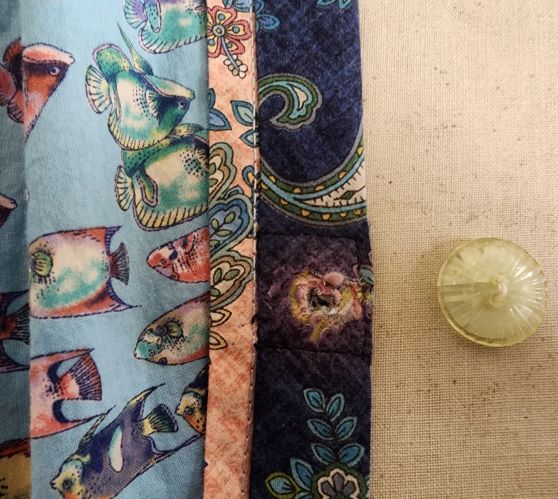
When the top came out of the drawer and began to be worn for its second summer, a button popped off. This did not seem too unusual and I set it aside to reattach the button. When I picked the top up to stitch the button back on, I found the fabric under the button was faded and a hole had been worked through the fabric, all 6 layers of lawn.
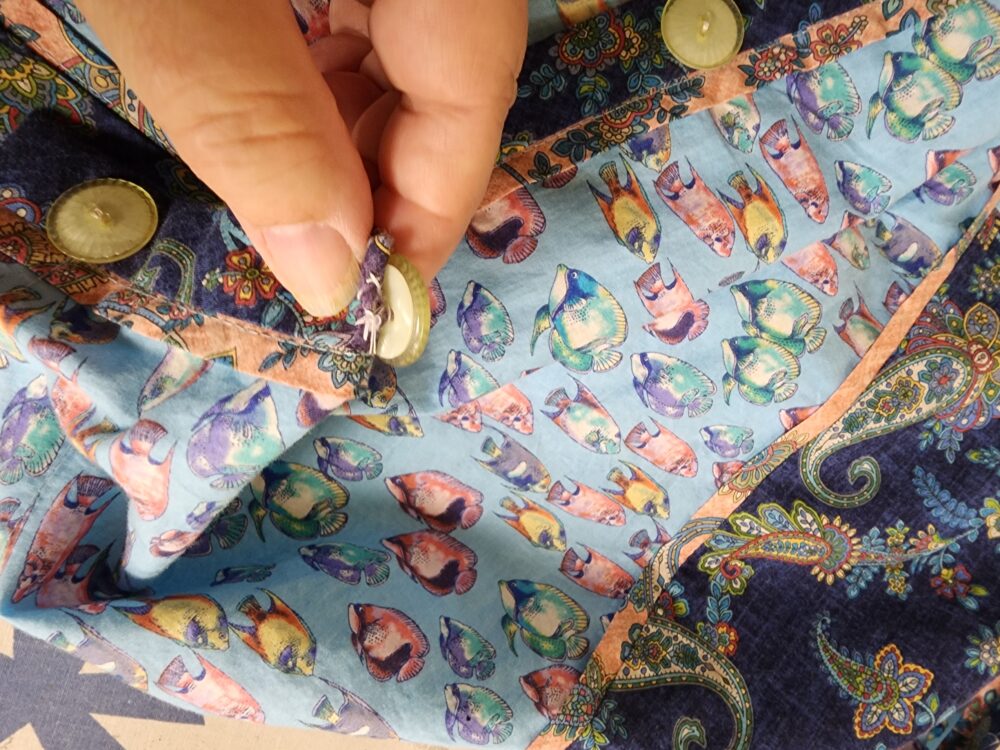
I tried to stitch the button back on using the fabric around the hole, but that soon caved in too. With an extra piece of the band fabric, I made a patch. The fabric scrap was interfaced, folded into a square the width of the band, and stitched on the inside of the band by sewing machine.
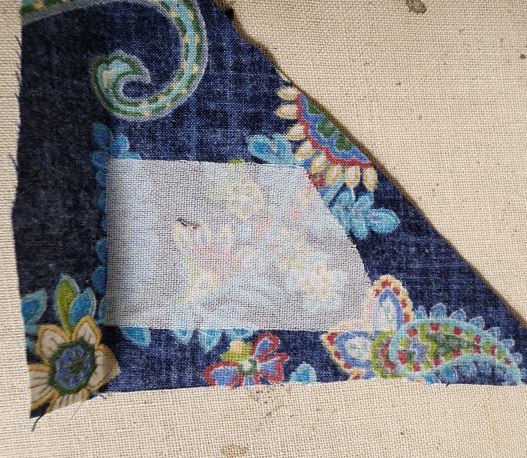
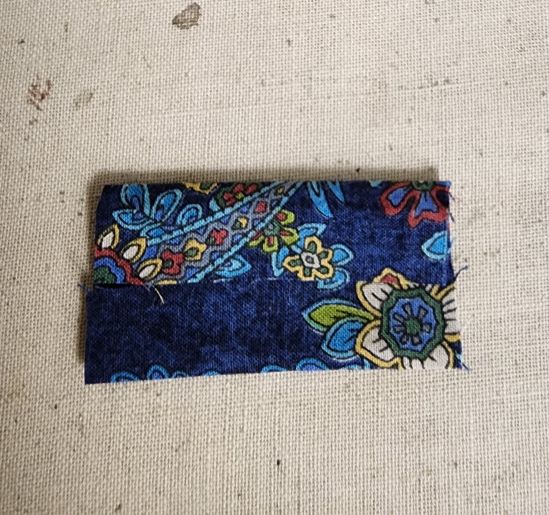
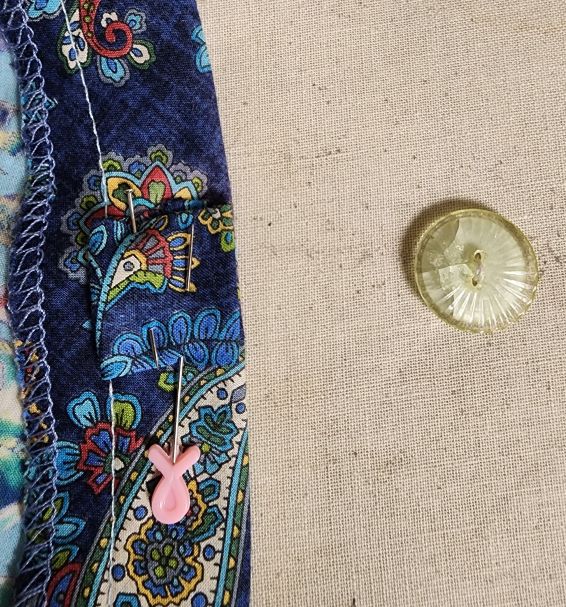
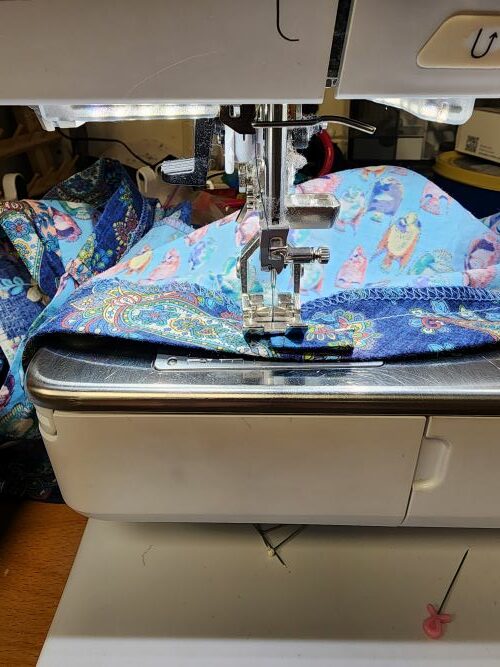
As the summer went on and I closely observed the buttons, I could see that the same thing was happening to each button, although not with quite as drastic an effect. I was able to expand the space where the button was attached and reattach them when necessary.
In the fall, Carrie and I met up with our favorite antique button dealer, Michelle of Dusty’s Vintage Buttons at the Original Sewing and Quilt Expo in Fredericksburg, VA. We asked her about this button mystery and showed her the photos. She told us that the buttons were made from either celluloid or casein. Here is what the HobbyLark has to say about these buttons in their Vintage Button Guide:
“After celluloid, another plastic was invented by the name of casein (or Galalith), which was made from a milk protein (casein) and formaldehyde, which celluloid buttons were also made from. Though it made great buttons, there was one downside to celluloid plastic—the substance is flammable.”
Michelle said, “I sure hope I did not sell you those buttons!” Immediately I assured her that they had come from one of my grandmother’s button boxes.

New buttons were found that were just a bit bigger to cover the patches and damaged fabric. They are made of shell and look just as good. But, the damage has been done. As I began to wear this little wardrobe workhorse this summer, the new buttons began to pop off. To get through the summer, I have shifted those buttons so they are stitched into the serged seam allowance that holds the band to the topper.
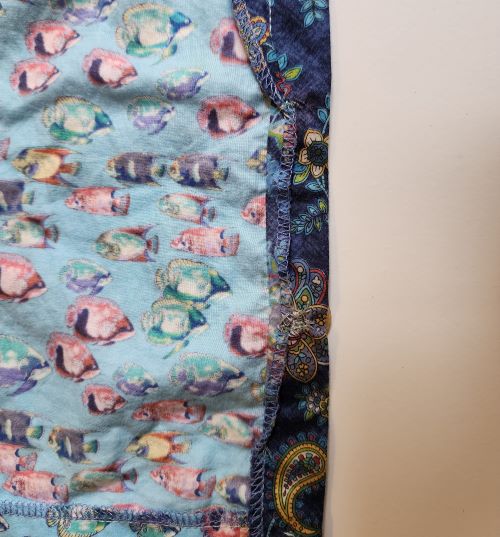
After my return to the states, I will find the fabric scraps and add a patch under each of these buttons.
Michelle and the HobbyLark recommend that any old plastic buttons not be stored in closed plastic containers, they can damage the other buttons around them and can also cause the box to catch fire. So be smart and choose safe and interesting buttons for upcoming projects.




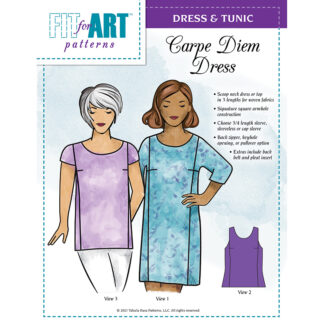

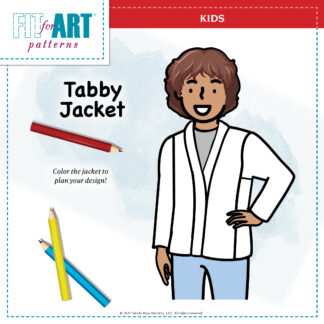
WOW! You learn something new all the time!
Great article on identifying old buttons. It’ll be fun but time consuming to go thru my stash!
Rae
Thank you so much for this article. I have some follow questions I hope you can answer. I was the fortunate recipient of my mother’s button tin with some real treasures that are being hoarded for special garments. I spent days separating them into sets that are now stored in individual plastic bags.
Is there any way to know if a vintage button is made of celluloid or casein? And is there any risk of fire with how I’m storing them?
Hi Linda, Great questions that I cannot really answer with authority. Here is what I did. Any hard plastic buttons that seemed like they were coming from the 20’s to the 40’s I took out of my plastic storage boxes that are arranged by color. They are in their own bag and the top of the bag is not sealed.
There is a good bit online that might give you more info if you want to keep reading. Our friend Michelle at Dusty’s buttons has an e-mail and facebook page. You could send her a e-mail with a photo and I bet she would reply.
Thanks. I believe most of them are from the 30’s-50’s. My bags are sealed so I’ll start by opening them and I’ll do follow up research to see if I can identify any that may be a problem.
Linda
I have lots and lots of old buttons They are mostly all sorted. I wonder how you tell the casein buttons from the rest. I can’t leave them all open and if some are casein I might want to just dispose of them. So far, none of them have caught fire. Phew!
Love all the great information! Looking forward to seeing you both in the fall!
Wow! I’ve never heard of such! I have my mother’s button box, which I am sure must have some of these vintage buttons. Thanks for the heads up!